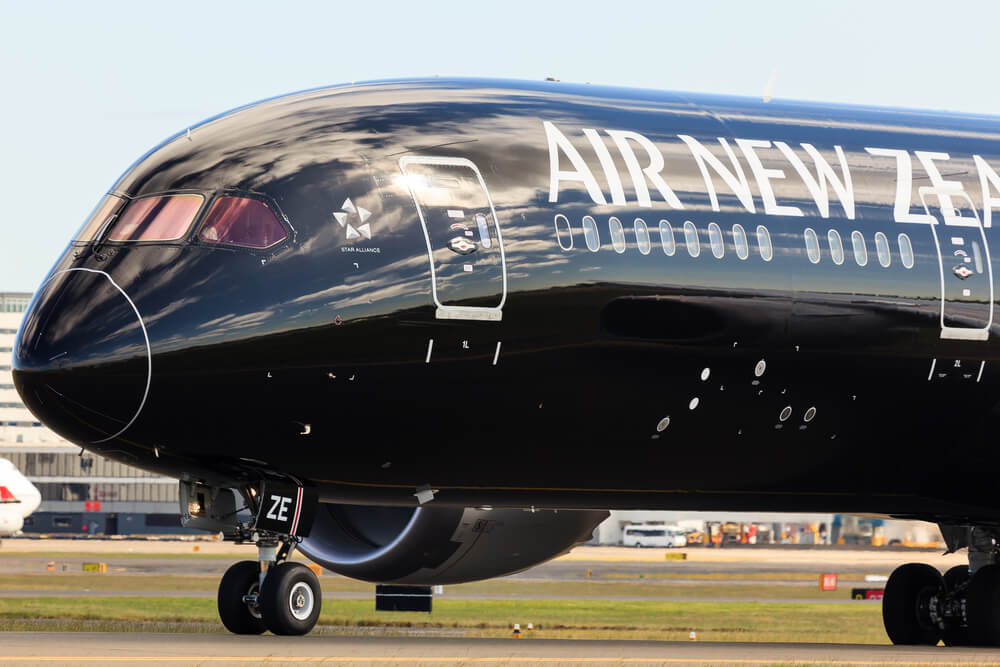Through 2019, the 787 Dreamliner accounted for 112 out of a total of 243 Boeing aircraft orders; and out of 380 deliveries through the year, 158 were Dreamliners. But in the current market, the odds are not in the wide-body’s favor, as the U.S. manufacturer announced further production cutbacks lasting until 2023.
In October 2019, Boeing said it would decrease the output of the wide-body jets from 14 to 12 per month the following year. Now, the company says the changes would be implemented “late” in the year, but that would not be the end of production rate reduction.
In early 2021, Boeing could only be making ten 787 Dreamliners per month, as the company is now expecting further production rate “adjustment” to the amount, due to the “current environment” and “near-term market outlook”.
Since 2011, when the 787 first entered service, Boeing has been making more Dreamliners than landing orders for it. The only exception was in 2013, when 177 orders stood in sharp contrast to 65 deliveries. However, when the manufacturer increased its output of the wide-body to approximately 10 aircraft per month the following year, sales just didn’t catch up.
Nevertheless, the company is not saying goodbye to the Dreamliner just yet and claims that the production rate cutback is temporary. It is planning to come back to the 2020 rate of 12 airplanes per month in two years’ time, 2023.
Looking into a longer-term perspective, there are still opportunities for the wide-body in the market, Boeing’s executives believe. Commenting on the wide-body aircraft market outlook, Greg Smith, Boeing’s chief financial officer said that the were more widebodies than ever before and older generation aircraft eventually would be needed to be replaced. The 787 family of aircraft was “extremely” well-suited to address that market, according to Smith.
Further hopes are associated with the 787-10 in particular, which Smith believes to be an “Incredible value proposition and the machine for our customers, especially considering what it is going to be replacing in the market.”
And then there is China. “China is a big deal and a big play on these production rates,” Greg Smith, the company’s chief financial officer reinstated on January 29, 2020.
Boeing’s Commercial Market Outlook forecasts that Asia will become the world’s biggest travel market by 2038, while China will take up the spot of the biggest domestic travel market. In the next 20 years, 44,000 new commercial passenger aircraft will be needed globally, of which 7,700 ‒ in China.
The market is vastly important for Boeing widebody sales, including the 777X and 787 Dreamliner. In September 2019, when discussing the market’s influence on the 787 production rate, then company’s chief executive officer Dennis Muilenburg admitted Dreamliner’s dependency on it. “We have reserved slots in our widebody production lines, both Triple Seven and 787, for Chinese orders and there is a dependency on Chinese orders ultimately coming through,” Muilenburg told the attendees of the Morgan Stanley 7th Annual Laguna Conference.
While matters for the company were complicated by the ongoing trade war between China and the United States, the situation has recently changed ‒ presumably, for the better for Boeing. On January 15, 2020, both countries signed the Phase One Trade Agreement. As per it, China has pledged to increase imports of American goods and services by at least $200 billion over the next two years. While it is unclear how much of the amount would go for Boeing aircraft, it is known that per the agreement approximately $78 billion is dedicated to manufactured goods ‒ like aircraft.
Yet Boeing’s executives remain reserved in discussing the topic. When asked about possible 787 sales in China by investors, they declined to comment whether the Dreamliner is part of the Phase I agreement, stating they it should not matter whether its Phase I or Phase II of the agreement.
Boeing 787 Dreamliner comes in three versions: 787-8, 787-9, and 787-10. The first variant to enter service was the 787-8 – the shortest version, which began flying with All Nippon Airways in 2011. The longer version, the 787-9, followed in 2014, with the longest Dreamliner, the 787-10, entering service in 2018.
As of December 31, 2019, Boeing has accumulated 1485 orders for the Dreamliner (across all three of its variants), the manufacturer’s books show. Of them, 939 aircraft have already been delivered, leaving 546 Dreamliners ón the company’s to-do list.
The largest operators of the 787 (leasing companies aside) are All Nippon Airways (Japan) with 71 Dreamliner in fleet, followed by United Airlines (48) and Japan Airlines (44).

